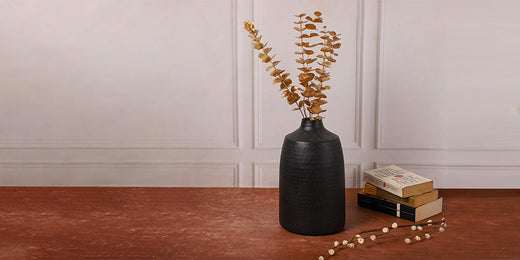
Handmade vs. Mass-Produced: Why Handmade Home Decor is Worth the Investment
Introduction
In a world driven by instant gratification, there is a rising appreciation for the unique charm and soulful craftsmanship of handmade decorative items. Each handcrafted piece embodies the dedication, skill, and artistry of the creators behind it. This blog explores the advantages of handmade products over their mass-produced counterparts and highlights dreamywalls—our brand devoted to quality and sustainability—addresses the challenges of handcrafted goods to deliver the perfect balance of authenticity and excellence to our customers.
1.What Is Handmade Decor?
Artisanal/handmade home deécor refers to domestic furnishings and decorations crafted via skilled artisans, often in small batches or as one-of-a-kind portions. Unlike heavily produced items churned out on meeting lines, those gadgets are made with aim, care, and often, age-antique techniques surpassed down via generations.
Key traits
· Handcrafted via professional artisans
· Limited production, often one-of-a-type
· High-fine, long lasting substances
· Strong cultural or artistic background
In contrast, heavily produced decor prioritizes amount over nice, counting on machines and standardized designs to fulfill excessive purchaser call for.Immerse yourself in why artifacts stand out, and include examples.
2.Why craft decorating is appropriate
· Unique designs: Each handmade piece has a story, often reflecting the artist’s personality and vision. No two pieces are exactly alike, making your home your own.
Example: A hand-woven Moroccan rug adds character and warmth, unlike the usual factory rugs.
Exceptional Quality: Craftsmen take pride in their craftsmanship, ensuring that every detail meets the highest standards. Handmade products are generally durable and timeless.
Example: Handmade and beautifully crafted pottery can last for generations, becoming an heirloom.
· Sustainability: Designer furniture is often made using environmentally friendly materials and techniques, and produces less waste compared to mass production.
Example: Reclaimed wood products reduce deforestation and create a native beauty.
· Supporting small businesses: Shopping for handmade goods supports local artisans and their communities rather than large corporations.
3.Hidden costs of mass production
While many manufactured furniture products may seem like a bargain, the long-term flaws can outweigh the benefits.
· Disadvantages: Products are often made of cheap materials, resulting in shorter lifespans.
Environmental: The process usually involves high energy consumption and dissipation.
Lack of individuality: Designs in offices can feel monotonous and impersonal, making it difficult to create a home that reflects your unique style.
4.Cost vs. Value: A Worthy Investment
Pricing plays a pivotal role for both creators and buyers. Handmade home decor items often carry a premium price tag, reflecting the intricate craftsmanship, high-quality materials, and significant time invested by artisans. This pricing ensures that artisans can sustain their livelihoods while delivering exceptional, one-of-a-kind items. On the other hand, mass-produced goods leverage economies of scale to reduce production costs, making them more budget-friendly and widely accessible. While handmade creations are often perceived as luxurious or specialty items, mass-produced alternatives are designed to meet everyday needs and align with mainstream
Though artisanal decor often comes with a better charge tag, its toughness, forte, and craftsmanship make it a worthwhile funding. Consider it a purchase that enhances each your home’s aesthetics and your peace of thoughts.
5.The Human Touch in Handmade Artistry
Handmade products are more than just items; they represent a special bond between the artisan and the buyer. Each purchase supports the creator's passion and craftsmanship, reflecting the artisan's dedication and individuality. Unlike mass-produced goods, handmade items carry a personal touch, making them more meaningful and unique.
Artisans often go beyond the transaction by directly engaging with their customers. They take pride in answering questions, addressing specific needs, and even offering customizations to create a truly personalized experience. This level of care builds trust and satisfaction, encouraging repeat business and loyalty, especially for small businesses in digital marketplaces.
Mass-produced products, on the other hand, often lack this human connection. Transactions are typically impersonal, with automated services and strict policies replacing direct communication. Without the thoughtful, hands-on approach of an artisan, these purchases feel purely functional, lacking the emotional resonance that makes handmade items so special.
6. The Future of Handmade and Mass-Produced Products
As we look ahead, both handmade and mass-produced goods will continue to hold significant positions in the global marketplace. Emerging technologies could play a transformative role, enhancing the efficiency of handcrafted production and introducing greater customization to mass manufacturing. With sustainability and ethical practices gaining momentum, both sectors are likely to adopt greener and more responsible methods. The future lies in striking a harmonious balance—celebrating the artistry and individuality of handmade creations while leveraging the scalability and affordability of mass production to meet diverse consumer needs.
Conclusion
Handmade decor isn’t just about beautifying your home—it’s about embracing artistry, sustainability, and uniqueness. By choosing handmade, you’re investing in quality, culture, and the stories of skilled artisans. The next time you’re looking for home decor, consider the timeless value of artisanal pieces. They offer unmatched beauty, durability, and a prsonal touch that reflects your unique style.
Explore stunning handmade options at DreamyWalls and make your home truly one-of-a-kind!
FAQs About Artisanal Decor
1. What does "artisanal decor" mean?
Artisanal decor refers to home furnishings and decorative items that are handcrafted by skilled artisans, often in limited quantities. These pieces are unique, high-quality, and carry cultural or artistic significance.
2. How is artisanal décor different from mass-produced items?
Artisanal decor is made with care and intention, often using sustainable materials and techniques. Mass-produced items are created in factories, focusing on quantity over quality, with standardized designs.
3. Is handmade decor more durable than mass-produced items?
Yes, handcrafted décor is generally more durable. Artisans use high-quality materials and craftsmanship, ensuring longevity and timeless appeal.
4. Why is artisanal decor more expensive?
The higher price reflects the skilled labor, premium materials, and unique designs that go into each piece. You're paying for quality, individuality, and sustainability rather than mass-market production.
5. How does artisanal decor contribute to sustainability?
Handmade decor items are often crafted using eco-friendly materials and methods. They produce less waste and support ethical practices, reducing the environmental footprint compared to factory-made goods.
6. Can artisanal decor be customized?
Absolutely! Many artisans offer customization options, allowing you to own a piece that perfectly matches your style and needs.
7. Does buying artisanal decor help local communities?
Yes, purchasing handcrafted items supports local artisans, their families, and their communities. It also helps preserve traditional techniques and cultural heritage.
"DreamyWalls stands by the W-A-L-L-S principles. Every product we create and every idea we share is built on Well-crafted Artistry and Lifelong Learning. We are committed to Authenticity, Loyalty to Quality, and Superior Standards, ensuring that your spaces reflect beauty and personality."
"W-A-L-L-S"(Well-crafted Artistry,Authenticity,Lifelong Learning,Loyalty to Quality,Superior Standards)
